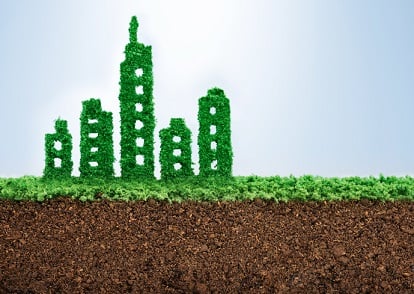Green buildings do not just save energy; they also keep people healthy, according to a new study by the Building and Construction Authority.
Workers in green buildings are less likely to suffer from fatigue and skin irritation and other symptoms of the “sick building syndrome.”
Compared to others, green buildings are equipped to filter out more pollutants, harmful bacteria and fungi. Workers are 60% less likely to get headaches, reported The Straits Times.
The study was released to strengthen the BCA’s bid to make buildings health-friendly as they are environmentally friendly.
The agency has partnered with the Health Promotion Board to update its Green Mark Scheme and encourage workplaces to adopt healthy lifestyles for its employees by providing indoor greenery, exercise facilities and access to healthier food and drink options.
The Green Mark Scheme was initially launched in January 2005 to drive Singapore’s construction industry toward more environment-friendly buildings.
It sought to promote sustainability in the built environment and raise environmental awareness among developers, designer and builders from conceptualisation to construction. Buildings with the Green Mark have environmentally sustainable designs such as carbon dioxide level sensors.
The Green Mark can have a positive effect on corporate image, leasing and resale value, according to the BCA website.
Currently, only about one in three buildings in Singapore is Green Mark-certified. BCA aims to increase that to 80 per cent by 2030.
With the new scheme, the BCA shows a shift to a balanced approach in caring for the environment and ensuring the well-being of building occupants.
“Associated with that is the quality of air they [occupants] enjoy inside Green Mark buildings,” BCA chief executive Hugh Lim told The Straits Times.
The new study provided hard evidence that the Green Mark certification for buildings has worked, and that their occupants were healthier and more productive, said Associate Professor Tham Kwok Wai from the National University of Singapore’s Department of Building, who conducted the study with the BCA.
The study was conducted over 31/2 years on eight Green Mark-certified office buildings -and six office buildings which had no certification, said The Straits Times.
Between the two groups, there was a disparity in the buildings' indoor levels of PM2.5 - microscopic particles harmful to human health.
A survey among about 360 occupants of both types of buildings found those working in Green Mark buildings were more satisfied with their office's temperature, humidity, lighting, air quality and indoor environment.
The results will help tweak existing criteria for BCA's Green Mark schemes, which cover various properties, from shopping malls to schools.
Related stories:
How ‘green offices’ affect productivity
The secret green weapon in HR’s arsenal

